
The first programme we made in colour was a guide to the Life Science Library. That was 33 years ago in August 1979 and colour was so new that we didn’t even have a colour logo caption at the start, in fact it’s our original black and white logo. Interestingly, the video is a great snapshot of what libraries looked like and how they operated at that time. Card indexes were still the norm with microfiche readers being a new addition. There is also mention of having a literature ‘computer search’ carried out at a cost of around £5, a cost which was probably considered high at that time and would have been carried out by a librarian for you. One of the great advantages of us moving into colour was the fact that we were able to edit. Until then it was possible, but difficult, and also in black and white. The video required a lot of different shots, like close-ups of index cards, so editing was an essential part of the production, in fact, without decent editing facilities this programme could not have been made.

Because we were going to cause some disruption in the library, where possible, we shot in the evening, or at least after 5pm. As you can see from the photo on the left, we also needed light..lots of it too. Our early colour camera was happy with external situations, but inside it required rather a lot of light to get good images. The library, at that time, was rather lower in light levels compared to today and there was no way we could cope without adding some extra lighting. Our biggest problem was finding mains sockets anywhere near the rows of book shelves. You tend not to need mains sockets when looking for books! Like most of our videos, we sometimes needed (and still do need) ‘rent a crowd’, so see if you can spot me appearing twice in the video. Also note a major change to the feel of the South Ken campus from when this was shot in 1979. See how empty it is soon after 6pm when the external footage was shot.
The video style is a bit 1970’s, mainly because that’s when it was made. I can’t recall under what circumstances the video was due to be seen, but I think it was designed to be viewed in the room that had been designated for watching videos. This was one of the small rooms called a Carrel around the edge of the library in which a monitor and video recorder had been installed. You’ll hear reference to these Carrels in the video. Listen out too for the mention of photocopies, there were only two in the whole library at that time.

The presenter of the video was Mark Caldwell, a former STOIC chairman from the mid 1970’s. Mark is now living in Germany where he used to work for the world radio division of Deutsche Welle. From time to time I can could hear him presenting items live over the air and I thought how far we had come since his time with STOIC at Imperial, only a few years before.
I’ve also noticed that, as this was the first video we made in colour, we still used the original TV Studio caption. This was the caption used up until this point, I hadn’t come up with a colour version at this time!
Colin Grimshaw October 2012


 This is the first year of the Video Archive Blog (it started in December 2009), so, as we’re nearly in 2011 I thought we’d reach back 30 years to see what was going on at that time. In 1980 non-broadcast video was still considered a new and exciting thing and we’d just moved into colour operation too. Maybe it was the whole idea of creating your own colour TV programme (which you could do if you had the right equipment) that encouraged people? So, in 1981 I was asked by the Department of Mathematics to think of ways to promote the department. It was decided an approach should be taken to discuss Mathematics in general rather than the department alone.
This is the first year of the Video Archive Blog (it started in December 2009), so, as we’re nearly in 2011 I thought we’d reach back 30 years to see what was going on at that time. In 1980 non-broadcast video was still considered a new and exciting thing and we’d just moved into colour operation too. Maybe it was the whole idea of creating your own colour TV programme (which you could do if you had the right equipment) that encouraged people? So, in 1981 I was asked by the Department of Mathematics to think of ways to promote the department. It was decided an approach should be taken to discuss Mathematics in general rather than the department alone.

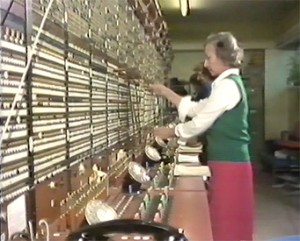
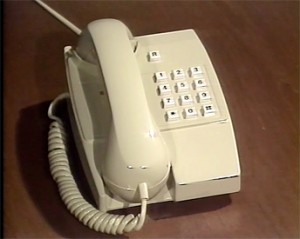

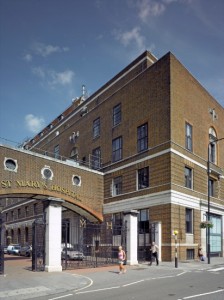

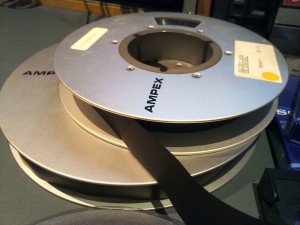

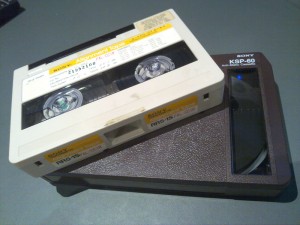

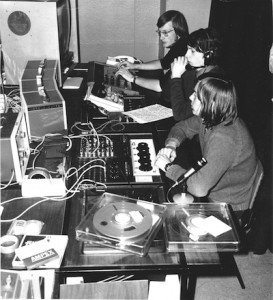

 So, I collected them all together and took out one of my faithful old reel-to-reel tape recorders sitting at home. What did I have and was there anything of interest? Well yes, very much so, it turns out. I had a few sound tracks of videos made with the student TV service STOIC for example. Always a good source of college history I listened to what the content was and to whether there might be a gem or two. On a live Christmas 1971 edition of their first news magazine programme TOPIC, I found interviews with Lord Penney (then Rector) about the recent 1971 NUS “Day of action”. This now takes the number of recordings we have of him from 4 to 5 and will be placed into the college archives. We’ll be seeing that programme, in ‘recreated’ form, in the next Seen and Gone number 2.
So, I collected them all together and took out one of my faithful old reel-to-reel tape recorders sitting at home. What did I have and was there anything of interest? Well yes, very much so, it turns out. I had a few sound tracks of videos made with the student TV service STOIC for example. Always a good source of college history I listened to what the content was and to whether there might be a gem or two. On a live Christmas 1971 edition of their first news magazine programme TOPIC, I found interviews with Lord Penney (then Rector) about the recent 1971 NUS “Day of action”. This now takes the number of recordings we have of him from 4 to 5 and will be placed into the college archives. We’ll be seeing that programme, in ‘recreated’ form, in the next Seen and Gone number 2.